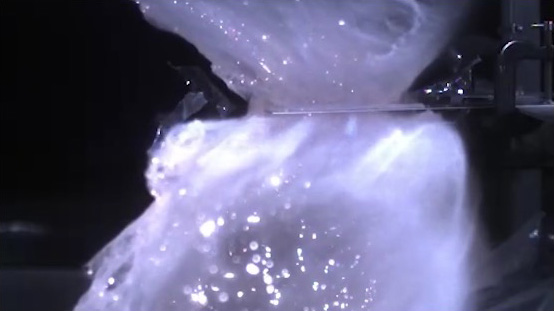
Scientists at Brown University wanted to find out. So, they did what any one of us would do and built an indoor asteroid cannon — with a lot of help from NASA.
The resulting study, published April 25 in the journal Science Advances, may sound ridiculous (or ridiculously awesome), but it aims to answer some of the most persistent questions in the science of planet formation. How did initially bone-dry planets get their water in the earliest days of the solar system? Why were traces of water discovered in the mantle of Earth’s parched moon or near the massive Tycho lunar crater? Can ancient, carbon-based asteroids work as a trans-galactic taxi service, shuttling little pools of water from one part of the cosmos to another?[When Space Attacks: The 6 Craziest Meteor Impacts]
If that latter theory is true, the math is not on its side. “Impact models tell us that [asteroids] should completely devolatilize at many of the impact speeds common in the solar system, meaning all the water they contain just boils off in the heat of the impact,” study co-author Peter Schultz, a professor in Brown’s Department of Earth, Environmental and Planetary Sciences, said in a statement. “But nature has a tendency to be more interesting than our models, which is why we need to do experiments.”
By Brandon Specktor – Full Story at Live Science


